Yes, you can see the Northern Lights in Ontario, Canada. We live in Ontario and have enjoyed exploring the best locations and times to view the Aurora Borealis. We want to share our valuable tips to make your Northern Lights adventure unforgettable. With its numerous dark sky preserves and hidden gems, Ontario is an amazing place to see this mesmerizing natural wonder.
Table of Contents
Discovering the Northern Lights in Ontario
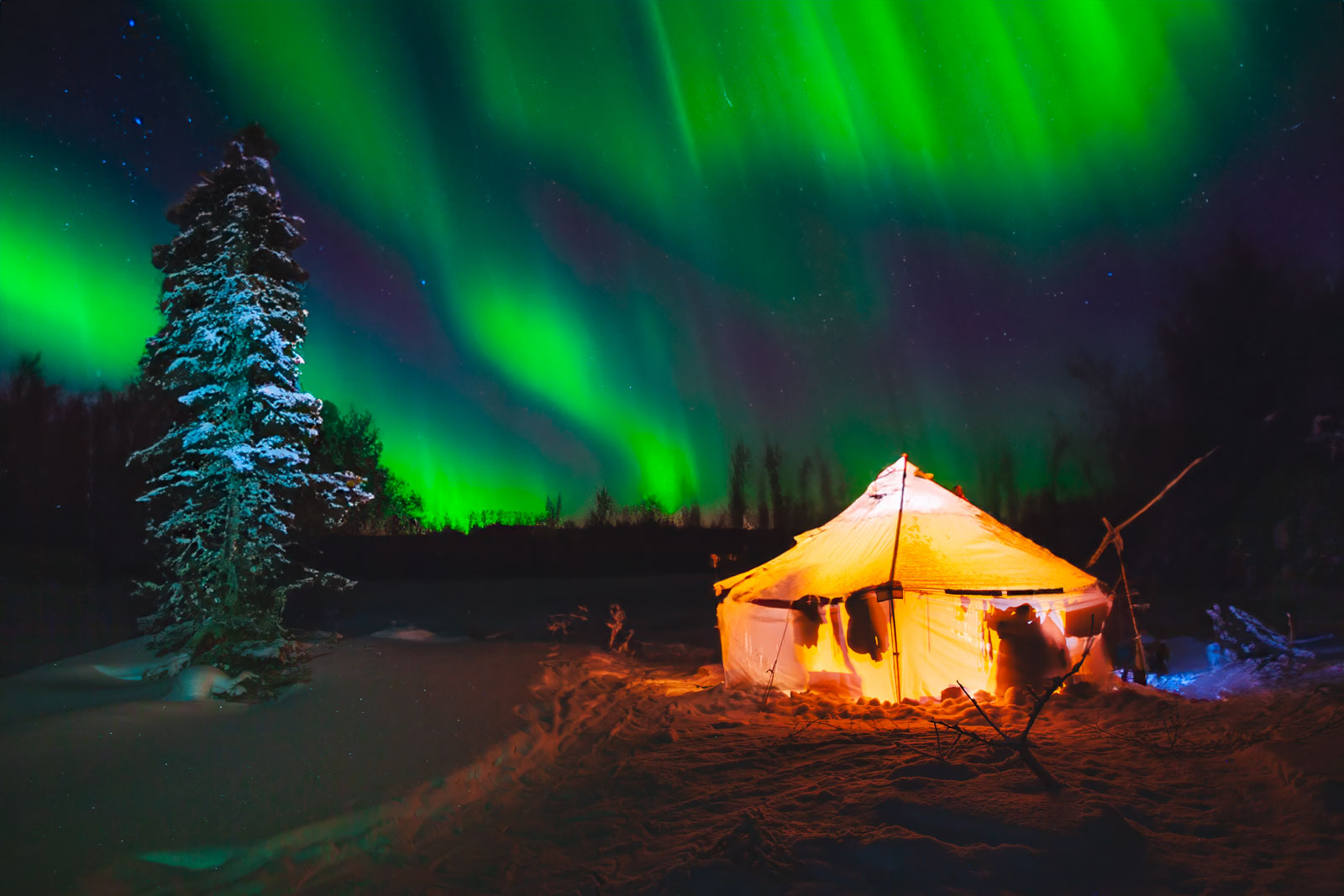
We have been lucky enough to see the northern lights in many places, including Iceland, Greenland, and many spots in Canada. But did you know Ontario is home to some of the most incredible spots for viewing the aurora? You don’t even have to travel far from Toronto or Ottawa to get a glimpse of the northern lights. Many Ontario Parks, including national parks, provincial parks, and conservation areas, offer fantastic opportunities to witness the aurora borealis dancing across the sky.
If you are just looking for a quick list, here are some popular locations for Northern Lights viewing:
- Algonquin Provincial Park in Southern Ontario
- Lake Superior – Lake Superior Provincial Park, Pukaskwa National Park, Thunder Bay.
- Sleeping Giant Provincial Park, which boasts some of the darkest skies in Ontario
With so many amazing places to choose from, you’re bound to find the perfect spot for your Northern Lights viewing adventure.
What are the Northern Lights?
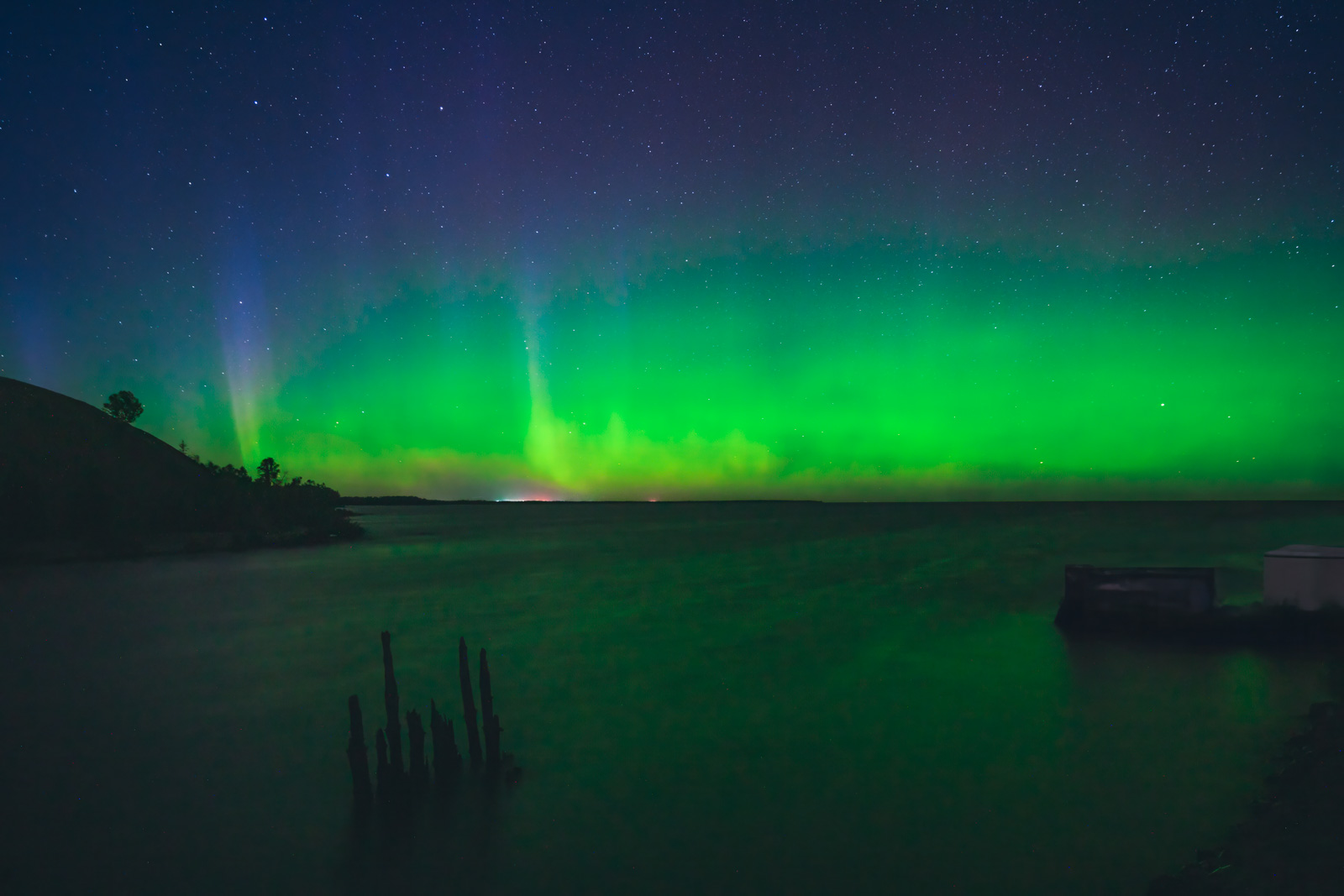
The Northern Lights, also known as the aurora borealis, are a natural phenomenon caused by electrically charged particles from the sun interacting with the Earth’s atmosphere. This mesmerizing light show typically occurs when there’s increased solar activity, such as solar flares.
The aurora borealis can display vibrant shades of green, blue, and purple across the night sky, creating a breathtaking spectacle that draws countless visitors to Ontario each year.
Best Times to Experience the Aurora Borealis in Ontario
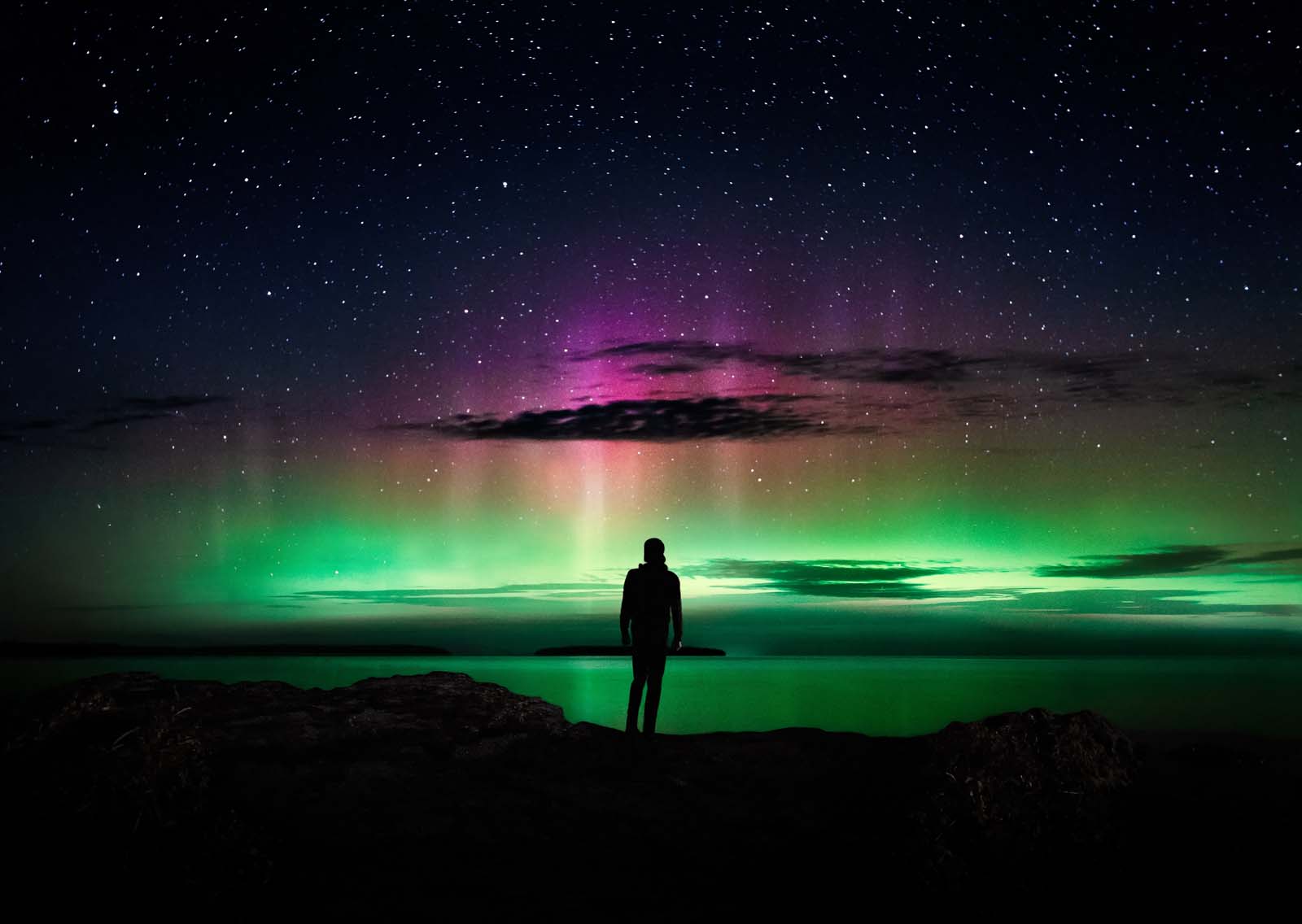
Observing the Northern Lights in all their splendor hinges largely on timing. Ideally, in Ontario, you should aim to catch the aurora borealis between 11 p.m. and 3 a.m. The months from November to March offer the best opportunities for viewing, as the sun sets earlier and the nights are longer. Additionally, clear and cloud-free skies during the colder months in Canada make it easier to spot the Northern Lights.
Keeping tabs on the local weather forecast and aurora predictions is also beneficial. Cloud cover, precipitation, moon phase, and the aurora forecast can all impact your chances of witnessing the Northern Lights. With a little patience and the right conditions, you’ll be rewarded with a truly unforgettable experience.
Top 5 Dark Sky Preserves in Ontario for Northern Lights Viewing
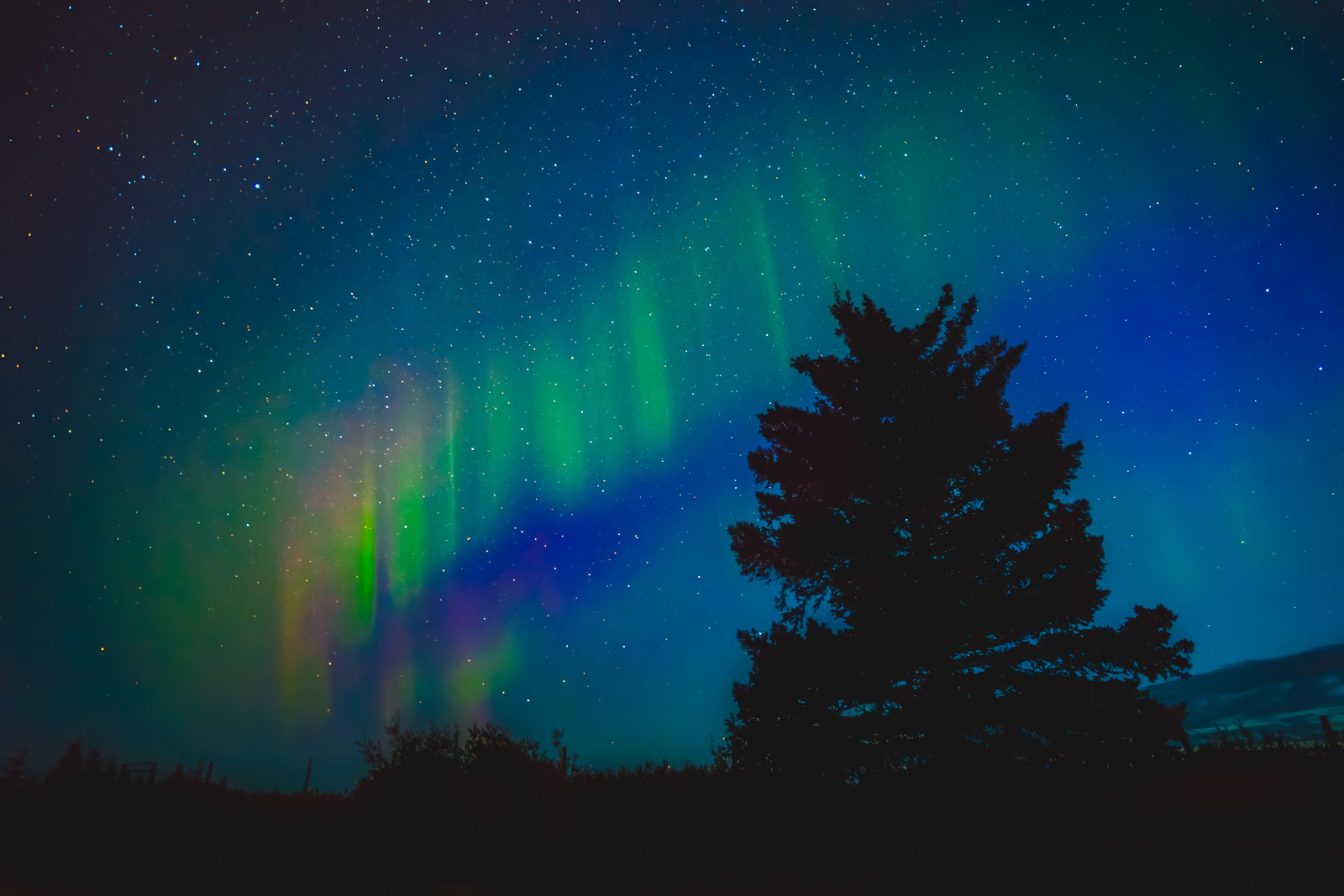
Dark Sky Preserves are designated areas that offer minimal light pollution, providing ideal conditions for stargazing and Northern Lights viewing. Ontario boasts several top-notch Dark Sky Preserves, perfect for experiencing the aurora borealis.
1. Quetico Provincial Park
Quetico Provincial Park is a fantastic destination for Northern Lights enthusiasts. Recognized as an International Dark Sky Park, Quetico offers a pristine wilderness experience with over 2,000 lakes and endless remote wilderness. Located west of Lake Superior and bordering Minnesota to the west, this park provides optimal conditions for aurora viewing, thanks to its shielded lighting and clear view of the starry sky.
Not only can you witness the Northern Lights, but you can also catch meteor showers and spot planets in the night sky. With year-round camping options, including rustic cabin rentals at Dawson Trail campground, Quetico Provincial Park offers a unique opportunity to immerse yourself in nature while gazing at the stunning aurora display.
2. Manitoulin Eco Park
Manitoulin Eco Park is another excellent location for catching the Northern Lights in Ontario. With its dark skies and minimal light pollution, this park provides prime conditions for viewing the aurora borealis. Located in Tehkummah on Manitoulin Island, Manitoulin Eco Park is about two hours away from Sudbury.
The park offers various events and activities specifically for aurora viewing, making it an ideal destination for Northern Lights aficionados. Visitors can camp overnight or purchase a Night Pass for access to the park’s stargazing facilities. With its combination of pristine skies and dedicated events, Manitoulin Eco Park is a must-visit for anyone seeking an unforgettable aurora experience.
3. Killarney Provincial Park
Killarney Provincial Park, Ontario’s first Dark Sky Preserve designated by the Royal Astronomical Society of Canada in 2018, is a renowned location for viewing the Northern Lights. Covering a vast 645 square kilometer area of untouched wilderness, Killarney offers exceptional conditions for stargazing and aurora watching.
One unique feature of Killarney Provincial Park is its observatory, making it one of only two provincial parks in Ontario with this facility. Visitors can enjoy:
- Astronomical programming led by Astronomers-in-Residence from York University
- A perfect opportunity to learn more about the night sky
- Witnessing the captivating aurora borealis
4. Lake Superior Provincial Park
Lake Superior Provincial Park, a designated Dark Sky Preserve recognized by the Astronomical Society of Canada, is an iconic location for viewing the Northern Lights. The park offers nightly telescope viewings at Agawa Bay Beach, giving visitors the chance to gaze at the aurora borealis up close.
With several campsites available, Lake Superior Provincial Park provides a variety of lodging options for visitors looking to experience the Northern Lights firsthand. Whether you’re camping in a serviced campground or enjoying the tranquility of a backcountry campsite, this park’s pristine conditions make it an ideal destination for aurora chasers.
5. Torrance Barrens Dark-Sky Preserve
As the world’s first Dark Sky Reserve, Torrance Barrens Dark-Sky Preserve offers prime conditions for experiencing the Northern Lights. Located near Gravenhurst in Ontario, this preserve covers almost 2,000 hectares of Crown Land and provides 360-degree panoramic views of the night sky.
Visitors can camp overnight and explore the preserve’s hiking trails during the day. To ensure the best viewing conditions, the park offers a Clear Sky Chart online, allowing visitors to check the weather before their visit. With its pioneering status and exceptional viewing conditions, Torrance Barrens Dark-Sky Preserve is a must-visit location for anyone seeking to witness the Northern Lights in all their splendor.
Tips for Northern Lights Viewing In Ontario
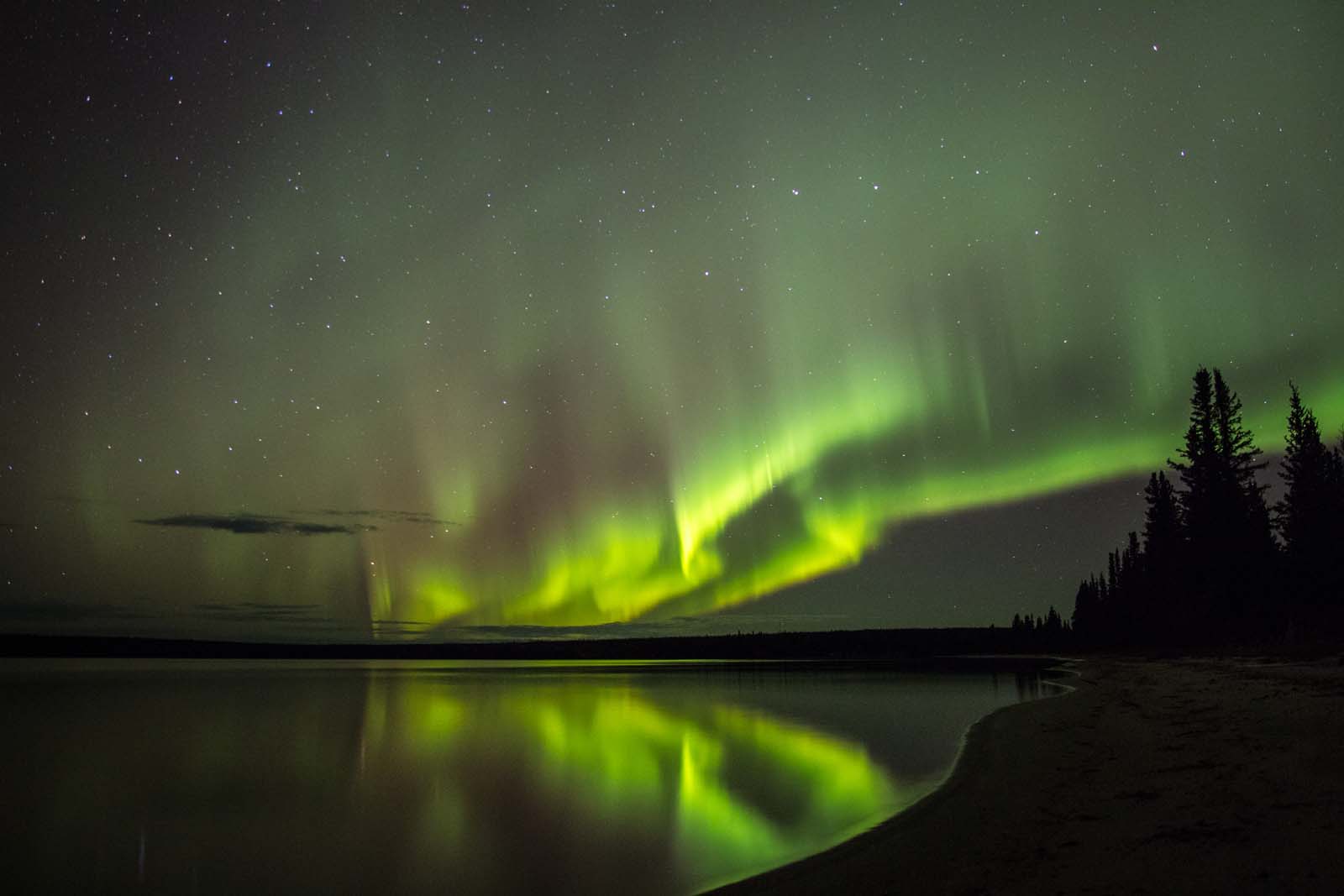
Considering weather conditions and ideal viewing times is a surefire way to maximize your chances of seeing the Northern Lights in Ontario. Cold, clear nights provide the best opportunities for witnessing the aurora borealis. The months from November to March are prime time for viewing, as the sun sets earlier and the nights are longer and darker.
So, you are planning to chase the Northern Lights? Great! Remember, the place you choose should be away from the city lights. And don’t forget to keep an eye on your surroundings. It’s also a good idea to check the local weather forecast. You know, things like cloud cover, whether it’s going to rain or not, the phase of the moon, and of course, the aurora forecast.
All these factors can make or break your Northern Lights experience. But hey, don’t worry too much. Just be patient, wait for the right conditions, and I promise, you are in for a treat. Experiencing the Northern Lights is truly unforgettable.
Northern Ontario’s Hidden Gems for Aurora Viewing
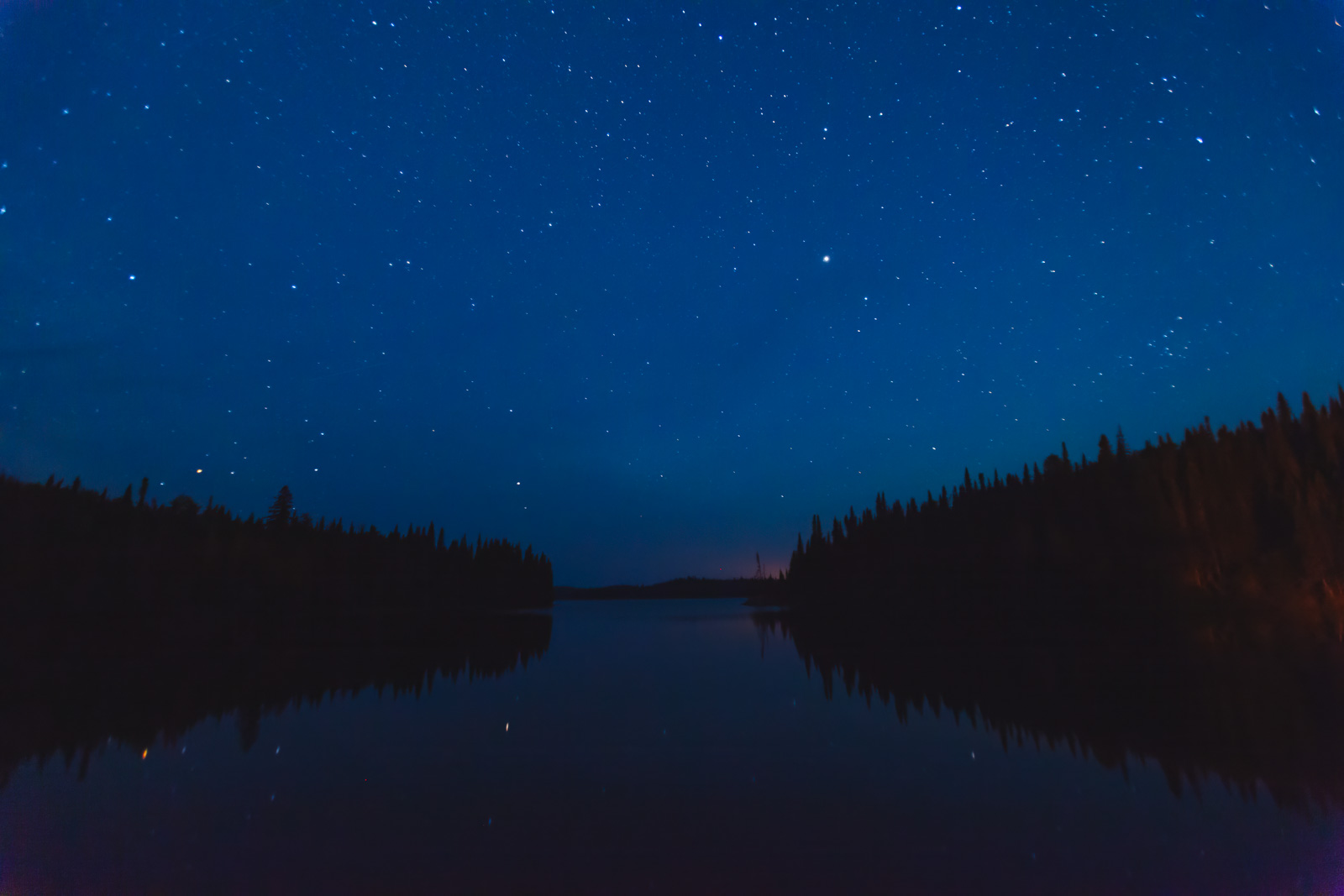
Northern Ontario is a treasure trove of hidden gems for aurora viewing, offering both pristine conditions and unique experiences. We now shift our focus to some lesser-known locations in Northwestern Ontario that are fantastic vantage points to witness the mesmerizing Northern Lights. These include North Bay, Cochrane, Moosonee, and Chapleau.
6. North Bay
North Bay is a city located in northeastern Ontario. It is a great destination for viewing the Northern Lights. With its numerous outdoor trails, landmarks, and live entertainment options, North Bay offers a fantastic destination for aurora enthusiasts. Some of the best places to witness the Northern Lights in North Bay include the waterfront and the provincial parks around the town.
The best time to visit North Bay for Northern Lights viewing is between September and November, with the optimal viewing hours between 11 p.m. and 3 a.m. The Fred McNutt Family Trail and the Richardson Ridge Trails provide excellent vantage points for admiring the dazzling aurora borealis display in the night sky.
7. Cochrane and Moosonee
Cochrane and Moosonee offer great opportunities for aurora viewing, thanks to their picturesque landscapes and scenic train rides. Cochrane is known for its fantastic Northern Lights viewing conditions, as it’s far away from light pollution. Moosonee, one of the northernmost towns in northeastern Ontario, is easily accessible by train and offers stunning views of the Moose River and James Bay.
For a truly local experience, consider staying at Moosonee Lilypad or The Sunflower Guesthouse, or camp at Tidewater Provincial Park. These charming accommodations provide a cozy base for your Northern Lights adventure, allowing you to fully immerse yourself in the beauty of the aurora borealis.
8. Chapleau
Chapleau, a small town with historic significance and the largest wildlife preserve on the planet, is an ideal location for Northern Lights viewing. Established in 1885 as a connection point for the Canadian Pacific Railway and the Hudson’s Bay Company Trading Post, Chapleau has evolved into a hub for mining, lumbering, and other industries. Its northern positioning and lack of light pollution make it a perfect spot to witness the Northern Lights.
The best time to visit Chapleau for Northern Lights viewing is between October and late March.
Tips for Capturing the Perfect Northern Lights Photo
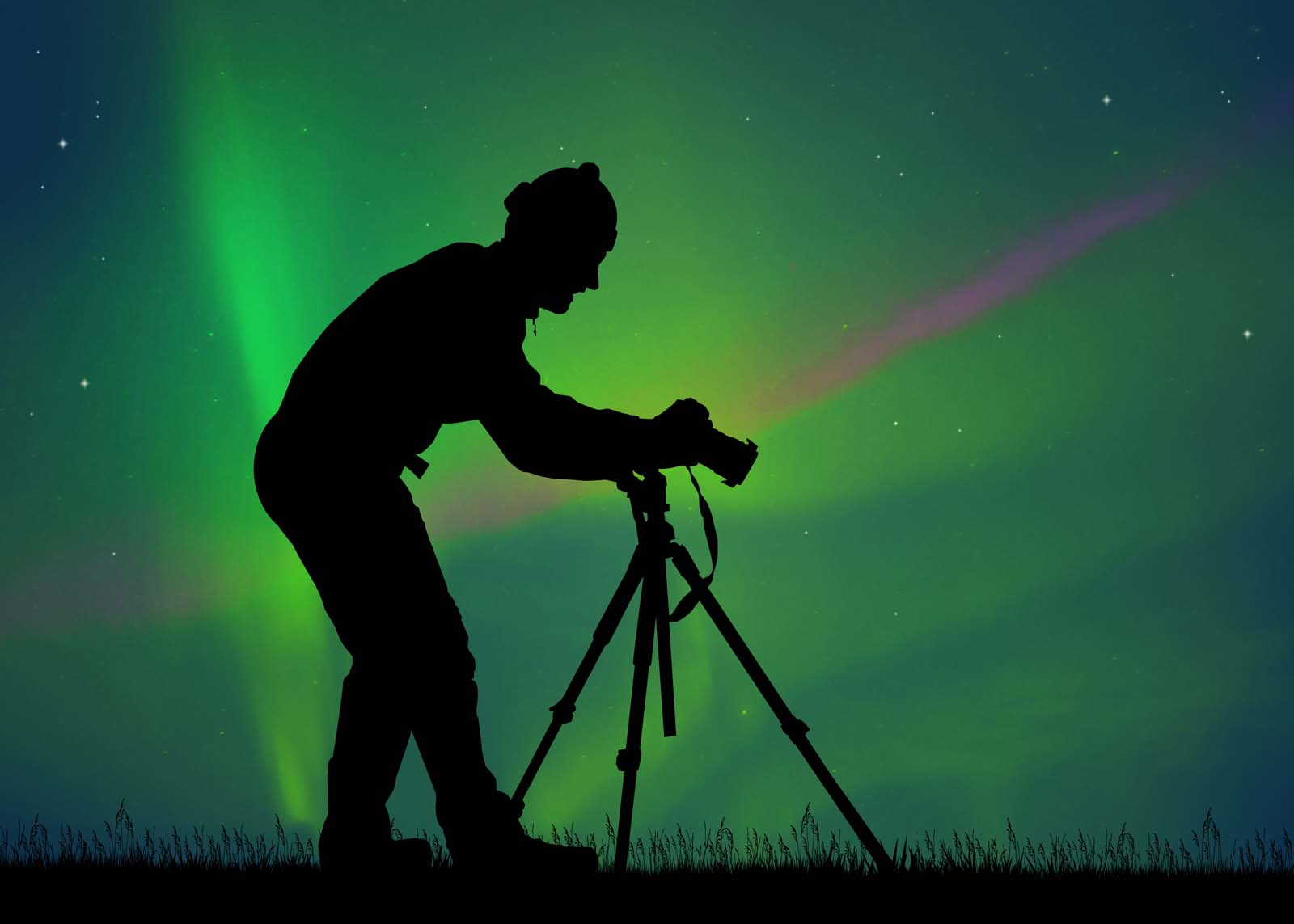
Capturing the perfect Northern Lights photo can be a challenging yet rewarding experience. The key to success lies in adjusting your camera settings and experimenting with composition. To get the best shots, follow these steps:
- Set your aperture (f-stop) to at least f4 or f2.8 for a wide lens opening.
- Go manual and set focus to infinity.
- Adjust your ISO and shutter speed accordingly.
- Use evaluative or matrix metering mode to ensure proper exposure.
- Include something or someone in the foreground for better composition.
Choosing the right camera and lens is also crucial for photographing the Northern Lights. Some great options for cameras include:
Wide-angle lenses with a minimum aperture of f/2.8 – f/4 are ideal for capturing the aurora borealis and the surrounding landscape. You are also going to want to have a solid tripod. With the right equipment and settings, you’ll be well on your way to capturing stunning images of the mesmerizing Northern Lights.
Preparing for Your Northern Lights Adventure
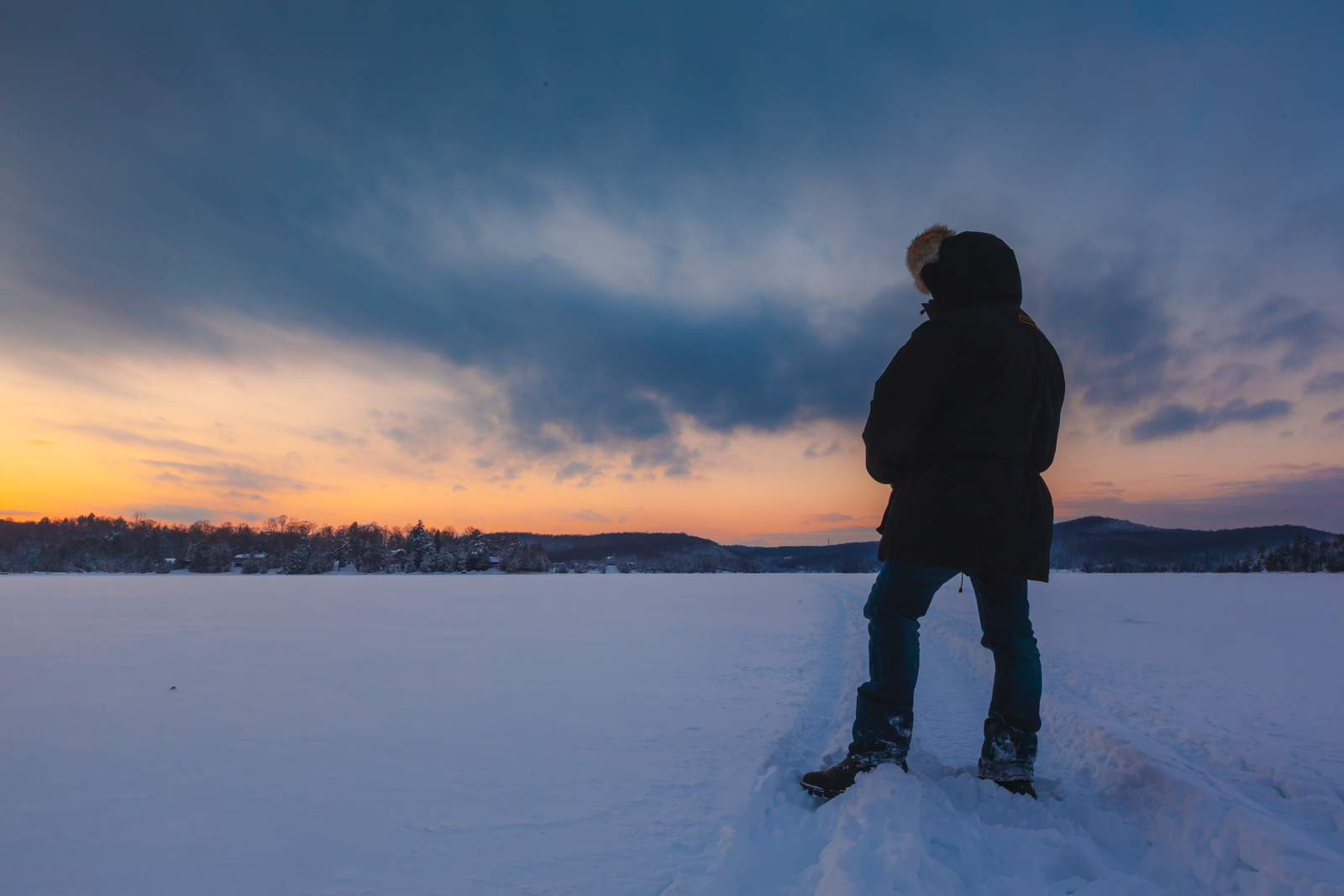
Before you head out on your Northern Lights adventure, it’s important to be well-prepared. One thing to keep in mind is that the best viewing conditions usually happen on cold, clear nights, so dressing appropriately is a must. Here’s what you should consider wearing:
You can’t go wrong with wool clothing. Think wool beanie, winter boots, wool socks, a wool sweater, long wool underwear, and mittens. We recommend Merino Wool, it not only keeps you warm but it keeps you dry. Cotton, on the other hand, isn’t the best choice because it won’t keep you warm. Also, don’t forget to bring extra layers and blankets to keep you cozy.
Safety is another thing you should be thinking about when planning your Northern Lights trip. Here are some things to keep in mind:
Try to pick a viewing spot that’s free of light pollution. Always be aware of your surroundings. And don’t forget to check the local weather forecast for cloud cover, precipitation, moon phase, and the aurora forecast to make sure you’ve got the best viewing conditions possible.
By getting everything ready in advance, you’ll be all set to fully enjoy your unforgettable aurora adventure.
Frequently Asked Questions
When can I see the northern lights in Ontario?
The best time to see the northern lights in Ontario is during the colder months of September and October and late at night from 11 p.m. to 3 a.m. when skies are clear and free of clouds. Look out for waning or new moons for an even better viewing experience.
Where can you see the northern lights in Ontario?
See the Northern Lights in Southwestern Ontario at Point Pelee National Park, Huron, Perth, Waterloo and Wellington’s Point Farms Provincial Park, Bruce, Grey and Simcoe, Kawarthas and Northumberland, Southeastern Ontario’s Haliburton Highlands to the Ottawa Valley, Muskoka, Parry Sound and Algonquin Park or Northeastern Ontario.
Can you see the northern lights in Sault Ste Marie?
Yes, you can see the northern lights in Sault Ste Marie during peak Aurora activity every 11 years. Algoma District, Northeastern Ontario is a great spot for catching the Aurora Borealis.
What time is best to see Northern Lights tonight?
Tonight is a good night for seeing the Northern Lights – they will be visible around midnight when the sky is darkest and clear of cloud coverage or light pollution.
What are the Northern Lights?
The Northern Lights, or aurora borealis, is an incredible display of vibrant colours in the night sky, caused by electrically charged particles from the sun interacting with our atmosphere.
Ontario offers a wealth of opportunities to witness the awe-inspiring Northern Lights. From dark sky preserves and hidden gems to expert tips for viewing and photographing the aurora borealis, we hope we have provided you with valuable information to help you plan an unforgettable Northern Lights adventure. With the right preparation and a bit of patience, you’re sure to be rewarded with a mesmerizing experience that will last a lifetime.
It seems that the Northern Lights have been spotted more and more in Ontario these days and if witnessing or photographing the breathtaking Aurora Borealis has always been on your bucket list, make your way to one of these places and keep your eyes in the skies.

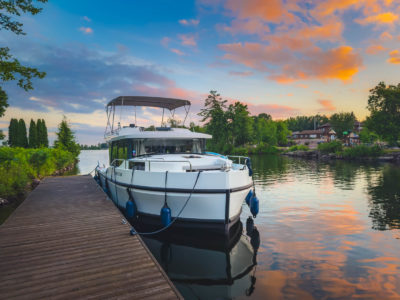
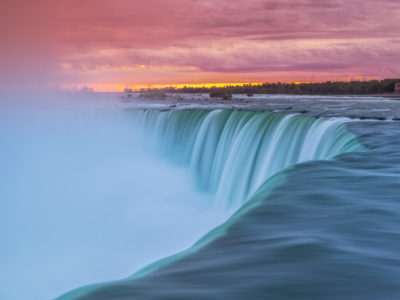
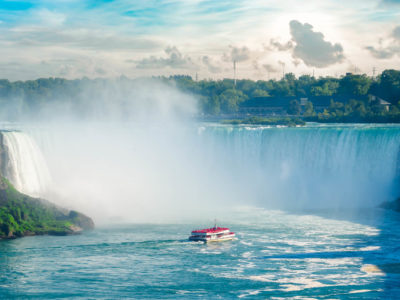
This really so awesome blog.